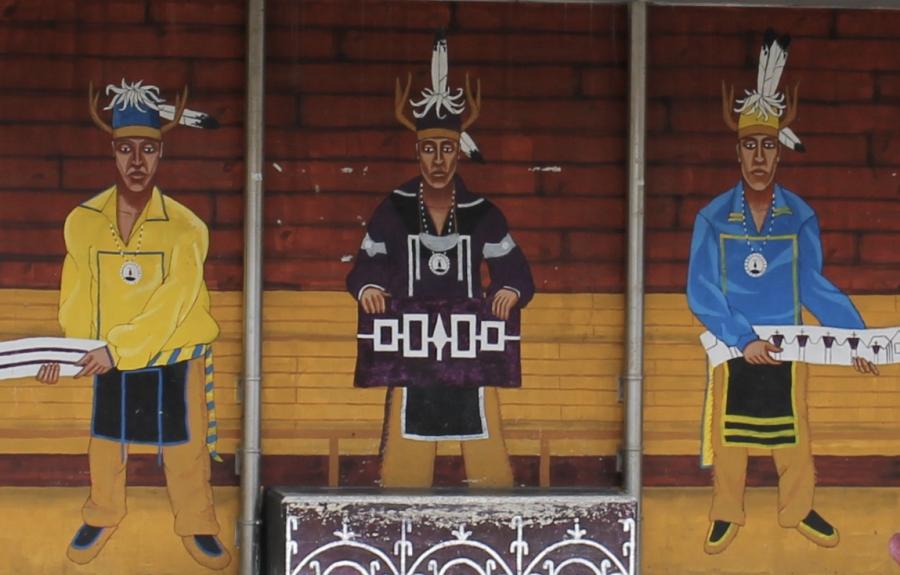Project Overview
The people who live in Ithaca live together with these murals, but oftentimes if one isn’t heavily involved in the community or has not lived in Ithaca for a while, these murals and their meanings may be lost on them. The Ithaca community needs more succinct and streamlined ways to interact with their city and their city’s art, otherwise these murals and their true impact cannot be delivered to the audiences it is supposed to reach.
Our Map!
We partnered with the local organization Ithaca Murals to create a functional digital map that could be easily accessed around the city! Through brainstorming sessions, and user interviews, we ended up developing a web-based app for our map!
Originally intended to be a downloadable application, we decided to switch gears to utilizing Google’s MyMaps feature (similar to Google Maps) in order to plot all the murals around downtown Ithaca. If you see a QR code with instructions similar to what you see below around Ithaca sometime soon, give it a scan! Special thanks to the first-year team for coming up with the QR code design and assisting in creating the map itself!
Lessons Learned
Importance of a support system
- Reaching out to others (mentors, supervisor, friend, etc.) has provided us with advice, information and resources that has helped us complete this project.
- You can find some of them in the Acknowledgements section!
- Reaching with a third party (Bill Leon) who is familiar building products helped us understand complexities of our project that we were did not consider until development (e.g. how to present information to users)
Project Management
Managing Deadlines
Setting deadlines for assignments ensured we completed our tasks on time. Setting deadlines during meetings ensures team members are aware of upcoming deadlines
Combating scope creep
- Although our initial project plan was rather ambitious, the scope of the project increased
- More uncertainties appeared as the project progressed (e.g. cost of using an API)
- Pivoting to a simpler solution helped us reduce the technical requirements of the project.
Building Distributed Data Systems
- Applications we take for granted rely on remote, distributed, computer systems (e.g. the cloud)
- These applications rely on third party applications and services to function, adding more layers of complexity behind the tools we use.
- Applications that leverage distributed computing can become immensely complex as these systems require numerous tools and services that cost a lot of money that one budgets for.
Next Steps
Retrospective (Things to Keep in Mind for Next Time)
- Be opinionated about client requests: does the client really need what the product or service they are asking for
- Encourage the client/community partner to play a more active role in the product development process
- This ensures both parties form an agreement on what ‘success’ looks like
- Spend more time to understand the problem the client poses before committing to a particular technical solution and be more open enough to change one’s plans as circumstances change.
- Additionally, spend more time building a roadmap for team developers to understand what they need to for and when they should finish.
Future Work
- Future iterations of our MVP and improving the MyMap
- Going back to our idea of a downloadable app once we helped Ithaca Murals identify a viable customer base
- Work with Ithaca Murals to focus on other aspects of the organization besides technology
- Solicit feedback from all communities Ithaca Murals serves
- This is essential for us to measure the effectiveness of our MVP
Questions to the Audience
- Should cutting edge technology be the solution to every problem? If not, what should?
- Making something for ourselves is far different than making for others. How do you match your expectations with that of others?
- We often focus on solving problems, but not thinking about them. Can posing a problem differently change how we address it?

